Introduction
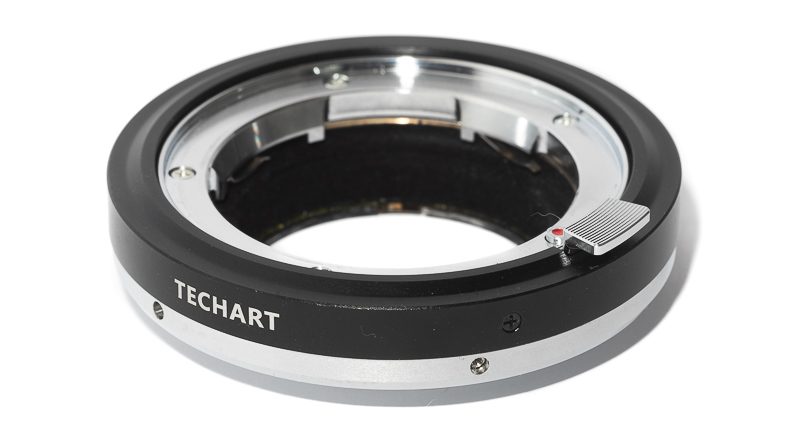
When the original Techart LM-EA7 adapter had been released it was a revelation: turning your manual focus lenses into autofocus lenses, how great is that? But there were also quirks to overcome, some reliability issues and incompatibilities with later camera models.
Now 5 years later there is a fully reworked, improved version. Does it solve all the issues we had with its predecessor? Let’s have a closer look at this new Techart LM-EA9.

Update March 2023: More detailed information added how to reset the adapter if it is not working anymore, further sample images added
Update February 2024: While my adapter is still working fine I have received several reports of it breaking and very unresponsive customer support. Therefore I cannot recommend anymore to buy it, until these issues have been resolved.
Contents
Specifications
| Weight | 133g |
| Mount | Leica M to Sony E |
| max. extension | 4.5 mm |
| Weight limit lens | 500g |
| Tested with | Sony A7III, Sony A7rII |
| Tested Firmware | 1.4.0 |
The Techart LM-EA9 sells for $399 and you can order it on the offical homepage or B&H (affiliate links) it shall be noted that only those bought through the official homepage and B&H are valid for product support from Techart.
Update February 2024: While my adapter is still working fine I have received several reports of it breaking and very unresponsive customer support. Therefore I cannot recommend anymore to buy it, until these issues have been resolved.
Improvements over LM-EA7
- four small ultrasonic motors instead of one bigger stepping motor for quieter and faster operation
- more durable extension mount due to more connection points
- improved ergonomics (no more bulge at the bottom)
- the LM-EA7 was known to drain your battery even when the camera was turned off, I didn’t notice such behaviour with the LM-EA9
Disclosure
The Techart LM-EA9 was kindly provided free of charge by Techart for reviewing purpose for a few weeks.
Update November 2022: I liked the LM-EA9, so I bought one at full retail for myself when they were back in stock.
Phillip already reviewed the predecessor here and I am going to reuse some parts of his detailed review where applicable.
How it works
If you want to automatically focus your M-mount lens you just attach it to the Techart Adapter, focus the lens manually to infinity, and you are set. Just half-press the shutter button to activate AF and the adapter will focus your lens just like any other AF lens.
The adapter achieves focus just as you would when you focus your lens manually. When you turn the focus ring of your manual lens you change the distance between sensor and lens.
The LM-EA9 does just the same: it has a variable extension of up to 4.5 mm.
Build Quality/Handling
The adapter generally feels solid and the design is way more sophisticated than that of the LM-EA7. The connection to the camera is very tight, my M-mount lenses show a tiny amount of radial play on this sample of the adapter though.
I pushed the adapter a bit by using a lens which weighs 510g and it still worked fine, but it does make less sound and of course also focuses faster when using smaller/lighter lenses.
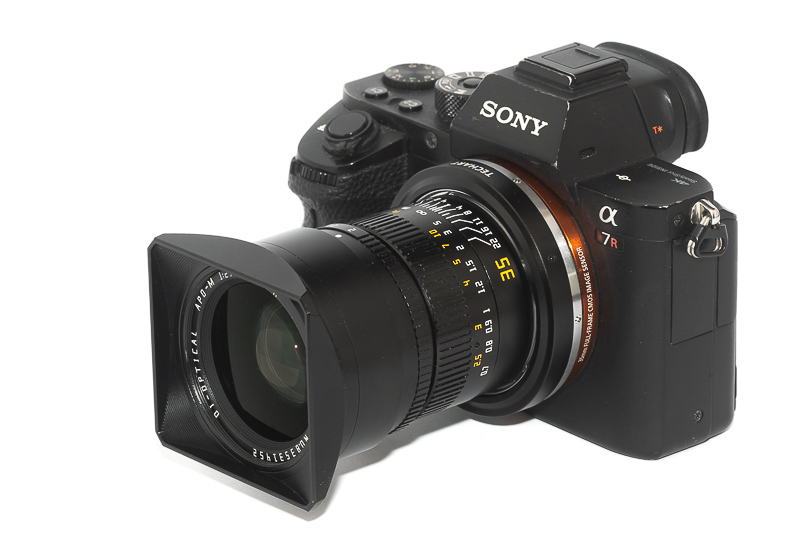
Of course I can’t tell you about sample variation with just one adapter and I don’t have any long term experience with it.
The LM-EA9’s design is definitely sleeker than that of its predecessor, but when extended you can still see rather big gaps between the bayonet and the outer casing. I am not sure I would be willing to use this adapter in the rain or dusty/sandy environments because of this.

Interestingly – despite the noticeably sleeker appearance – the Techart LM-EA9 weighs exactly as much as its predecessor: 133g. The lightest M-mount adapters weigh only around 50g.
I didn’t really like the big bulge at the bottom of the LM-EA7 as it didn’t work well with my L-brackets and was always in the way, this one only has a slightly bigger diameter than a normal adapter which makes using it way more fun
What lenses the LM-EA9 works best with?
What hasn’t changed compared to the predecessor: you won’t have a very wide focus range with longer lenses. The longer the focal length the more extension is needed to focus close and the adapter is limited to an extension of 4.5 mm.
In the following table I wrote down the lenses’ (measured) minimum focus distance that is reachable with the LM-EA9 when the lens is set to infinity:
| Focal Length | MFD on LM-EA9 |
|---|---|
| 21mm | 0.20 m |
| 35mm | 0.41 m |
| 50mm | 0.75 m |
| 75mm | 1.37 m |
| 90mm | 2.13 m |
| 135mm | 9.00 m |
You can see that the range with longer lenses is quite limited whereas the benefit is that with wide angle lenses you can often focus closer than you normally could.
The following e-function gives a good approximation to calcuate the MFD for lenses of different focal lengths:
MFD [cm] = 0,1244 x e^(0,032*Focal Length [mm])
You can still use the focus ring to get close to where you subject is and let the AF do the rest, but this is quite bothersome when the distance between you and your subject(s) changes a lot. The longest focal length I tried was 135mm and here the operation was already rather bothersome.
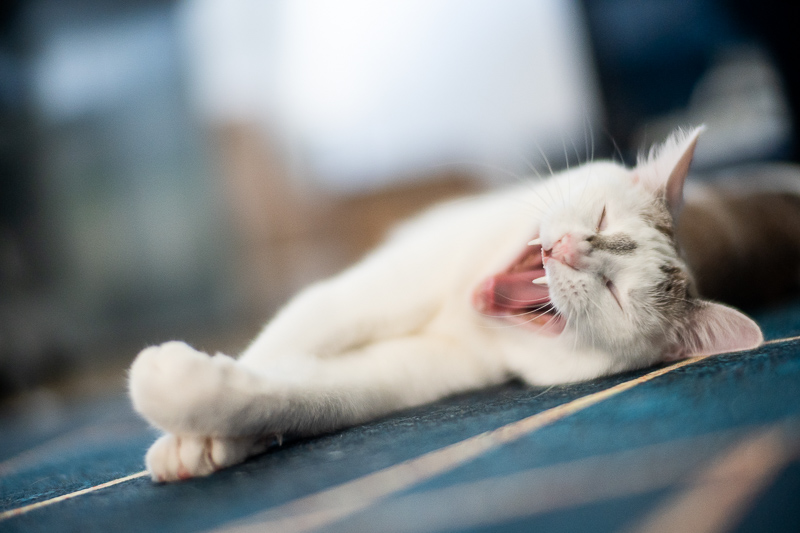
So ultimatey, I think with lenses not longer than 50mm there are little restrictions and the whole operation can be described as smooth. With lenses from 50-90mm there are some restrictions – prefocusing the lens might be needed – but it is still usable. Beyond that I didn’t find it really useful to be honest.
AF performance
General remarks
I mainly used the LM-EA9 with a Sony A7III, I didn’t notice a big difference in performance when using it on an A7rII though, except for the eye AF not working on gen 2 (and probably gen 1) cameras.
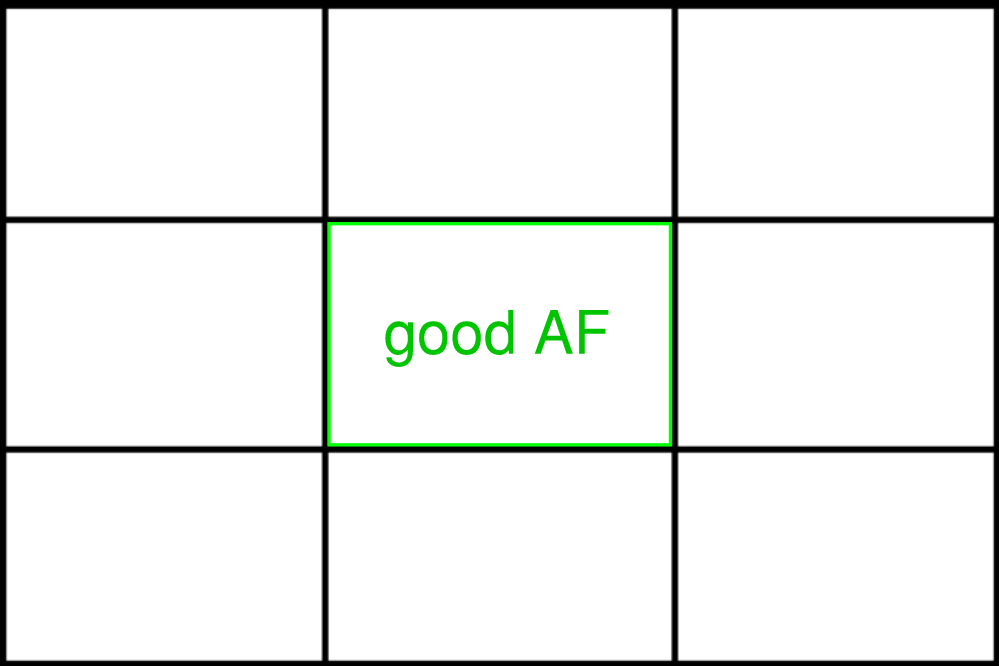
With most lenses the AF only works properly in the central part of the image whereaus outside of it it doesn’t work at all. Many people think this has to do with how sharp the lens is, but I don’t think so. Out of 11 M-mount lenses I tried the only ones that worked well also in the corners are the Leica 90mm 2.0 pre Asph and the Syoptic/Mr. Ding 50mm 1.1. My guess is this has to do with the lateral CA correction (this might have influence on the on sensor phase detect pixels) and these two lenses are overcorrected for lateral CA (which is rare to encounter).
I uploaded a few short videos where I tested how off center focusing for 4 different lenses works here. In the videos I used AF-C Flexible Spot, but the behaviour is the same when using AF-S as well as AF-C Wide and this is true when having eye AF activated as well.
The good news is that I rarely place people or their eyes outside of the rule of thirds intersections and here it still works well, so the limitations are not as big as they may seem at first sight.

Stills
For still photography the AF works decently. With non moving subjects it hits the target most of the time, but the hit rate is still not as good as it is with a native lens.
I am happy to report that eye AF (tested with humans as well as animals) is supported (gen 3 cameras where you don’t have to press an additional button) and usually finds its target, this is of course very helpful.
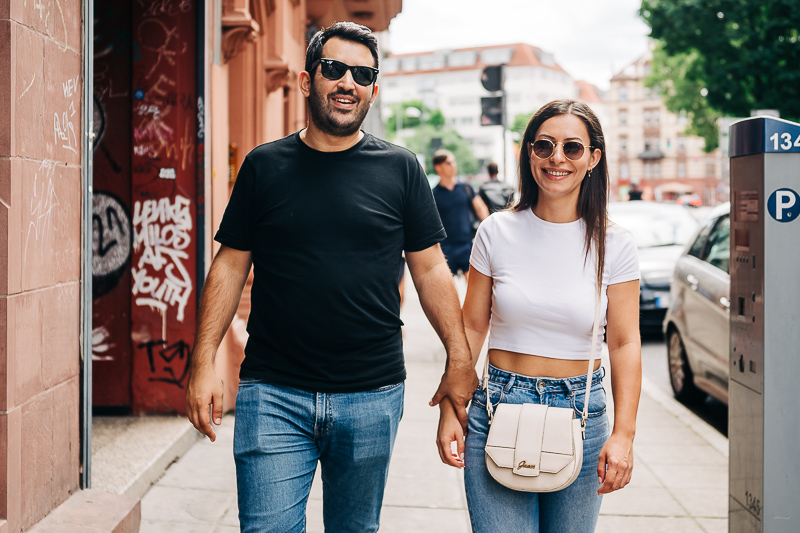
For slow moving subjects it also works well enough in AF-C mode – I am not sure I would have been able to easily take this picture without the LM-EA9 – but I definitely recommend to take not only one shot, but rather a few more to make sure that one will be in good focus.
I have been shooting a musical with this adapter and was generally surprised by the AF hit rate:

If you are thinking of tracking fast moving subjects – e.g. dogs or people doing sports – I am pretty sure you will end up being disappointed though.
I didn’t encounter a noticeable drop in AF speed or hit rate in low light when using the A7III.
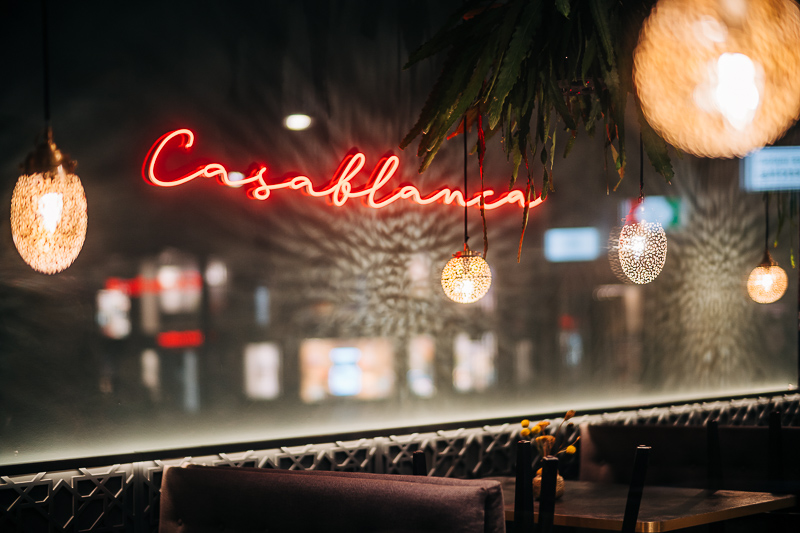
Video
In video mode AF does not work at all, it hunts like crazy but never manages to hit the target.
Settings
As was already the case with the LM-EA7 you can change some basic settings. You do that by changing the aperture in the camera and pressing the shutter button.
Changing focal length
The first function is setting the focal length the adapter communicates to the camera. This focal length will be used for the IBIS to work properly and will also be written in the Exif data so you can track which lenses you have used. No matter the focal length setting, the adapter will always be recognized as a DT 40mm 2.8 SAM lens in the exif data – same was true for the predecessor.
But how to change the focal length setting? Set the aperture in camera according to the corresponding aperture value from the list below, take a picture and then dial back to f/2.0. Dialing back to f/2.0 is crucial, if you don’t do this your pictures will be overexposed.
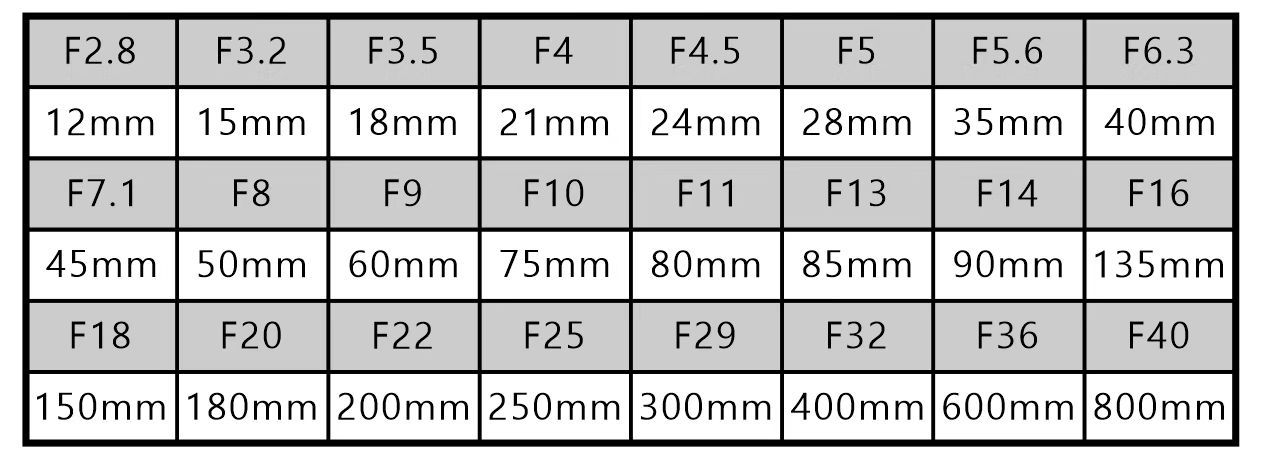
For the LM-EA7 Techart provided a configuration app for Android that allowed for more distinct settings. Currently it is undecided if there will be such an app for the LM-EA9 as well.
Changing AF mode
The LM-EA9 offers two AF modes which are activated by taking a picture with the camera set to f/51 or f/57.
- Normal Focus Mode f/51
The standard focus mode which should also be the fastest, not recommended for lenses that are faster than f/1.4 though - Slow Focus Mode f/57
Recommended when experiencing focus issues with lenses faster than f/1.4 in normal focus mode
To be honest with you: I did not notice any meaningful differences between these two focus modes.
Changing the parking position
How does it work? Whatever the adapter’s current position is when pressing the shutter button with the camera set to f/45 will be the new parking position. This already worked with the LM-EA7.
What can this be useful for? When you let the adapter focus as close as possible it will work as a 4.5 mm extension tube so you can focus closer than you usually could, especially with wide angle lenses.
To activate it you have to turn the aperture dial 27 clicks, take a picture and turn it back another 27 clicks. An issue carried over from the predecessor.
I only see very few use cases for this, often it is easier to just use either something close or far away to have the adapter retracted or extended and then switch to MF for it not to move around anymore.
Update: this only works up to firmware version 1.4.0 which is why I never updated to 1.5.0
Updating the firmware
The LM-EA9’s firmware can be updated which is a nice feature, as theoretically new features could be added or simply the stability and compatibility be improved.
I read that for the LM-EA7 the update process wasn’t very smooth and I am happy to report it works really well with the LM-EA9 now.
The LM-EA9 ships with a rear cap/dock that can be connected to a computer or Mac via an USB-Micro-C cable. After downloading the appropriate software from the Techart homepage you can choose the desired firmware from a list, no need to find the correct update file before. Even a downgrade to a previous version is currently possible.
Things you should be aware of
Set the camera to f/2.0
If your camera is set to anything but f/2.0 your pictures will be overexposed, so make sure it is always set to f/2.0.
In camera (e.g. in the Fn Menu) you can only switch between AF-S and AF-C. If you want to focus your lens manually (and have the option to use Focus Magnify) you need to assign “AF/MF Ctrl Toggle” to a custom button.
This also allows you to use the adapter as a 4.5 mm extension tube: point the camera at something close and use AF so the adapter extends, then set the camera to MF to keep it extended and manually focus the lens from there.
Some lenses with infinity lock collide with the adapter
According to a reader (have a look at his comment) some lenses with infinity lock collide with the adapter and therefore cannot be used.
Using non-M-mount lenses
The LM-EA9 has a Leica M-mount but you aren’t limited to M-mount lenses. You can buy adapters for many other lens mounts to M-mount and turn them into AF lenses this way. Not any adapter to M-mount will fit though.
Also keep in mind the weight limit of 500g. The LM-EA7 had a weight limit of 700g but over time many of these adapter’s mechanics deteoriated, leading to tilt and ultimately degrading the image quality of the lens you are using with it. Therefore I think there are definitely reasons for the lower weight limit here and I would advice to stick to it.
Negative effect on Image Quality
The adapter can have a negative effect on the image quality of lenses with a floating elements design. If you use a unit focus lens (unit focus means all the elements move the same on focusing) image quality won’t be affected at all.
Lately there have been more rangefinder lenses that use a floating elements design, e.g.: Leica 50mm 1.4 Asph, Leica 35mm 1.4 FLE, Zeiss ZM 35mm 1.4, Laowa 9mm 5.6, Voigtländer VM 21mm 1.4 or 7Artisans 35mm 1.4 IF – to only name a few of the more popular ones. Older and longer M-mount lenses are usually unit focus.
If you think about using old SLR lenses via an additional adapter many of the wider and most of the autofocus lenses also feature a floating elements design as well.
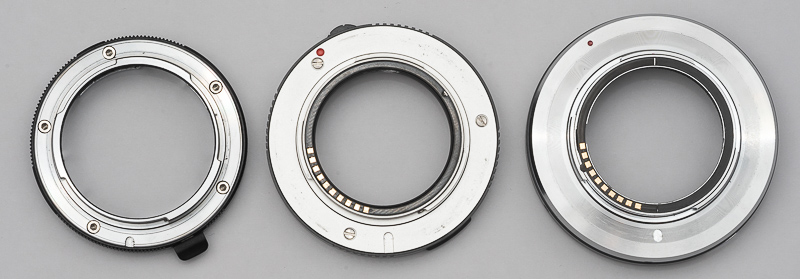
As you can see from the picture above – because of the electronic contacts – the opening is a bit smaller compared to a “dumb” adapter like the Metabones.
So as was already the case with the TTArtisan 6-bit Leica-M to Sony-E adapter there is added vignetting when using the MS-Optics 135mm 2.4 lens.
All my other M-mount lenses work fine in this regard, but I am pretty sure there are more (fast and/or long) lenses where this can happen.
Firmware updates and product support
The predecessor LM-EA7 received its last firmware update in January 2018 – so roughly 2 years after release – to support A7rIII and A9. From what I have read the adapter still doesn’t work on the Generation 4 cameras (A7rIV etc.) at all and it doesn’t look like there will ever be a new firmware update to fix this.
I am not sure for how many years we should expect product support in the form of firmware updates, but if I had bought the LM-EA7 for ~400€ and I couldn’t use it anymore on newer cameras I wouldn’t be happy at all and I would definitely think twice before investing a big sum in another product of that company where this might happen again.
Reseting the adapter
Some people had issues with the adapter not working properly anymore, especially after firmware update to 1.6.0. Techart sent me this troubleshooting guide which often fixes the issue:
- Download and unzip the firmware updater from attachment for Windows or for Mac here.
- Connect the adapter with its rear cap to the computer.
- Open the firmware updater, choose LM-EA9 v1.5 then click “update”.
- The firmware will automatically be updated and loaded into the adapter. A loading icon will be shown. The whole process takes less than 5 minutes to complete. Once the process is done, unplug the cable.
- Install the adapter with your lens on your camera.
- Turn on the camera and set the aperture on the camera body to f/90.
- Manually focus on a subject in order to allow shutter release.
- Release the shutter/take a picture.
- Set the aperture back to f/2.0 and see if the adapter motor has any response now. Sometimes it will take long for the function to be activated again.
- Repeat step 6-9 if the motor is still not responding.
- Once the motor resume working, connect the adapter to computer again
- Open the firmware updater, choose LM-EA9 v1.6 then click “update”.
If this doesn’t work get in contact with the Techart support.
Personally I have been using this adapter for months and did not encounter any of these issues, but I am only using it with the older Sony A7rII and A7III cameras and I am still running firmware 1.4.0.
Conclusion
good
|
average
|
not good
|
To be honest with you, I have never been interested in the first generation Techart Pro LM-EA7: too clunky, too bulky, too noisy and after some time we found out it also has longevity issues.
When I was approached by Techart to have a look at this LM-EA9 and I saw the sleeker design and heard they are using several small ultrasonic motors instead of one noisy micro motor and the improved mechanical design I was immediately interested though.
And indeed, it turned out to be a really useful accessory I could actually see myself using regularly. I am even considering a thin filter mod for one of my Sony cameras to be able to use my favorite M-mount lenses with AF but without any optical compromises on a Sony camera.
The lack of firmware updates in the last 4 1/2 years for the predecessor and its compatibility issues with newer cameras are still a bitter pill to swallow and are also making me question to invest a big sum of money in this successor though.

Still, it is not like there is anything else like this on the market and this LM-EA9 definitely is a huge step up from the LM-EA7 and at the end of the day simply a really cool accessory. I have been telling you about all its quirks and limitations – and you should be aware of them – but in many scenarios it works actually quite well and as long as you are not shooting action pictures you may not even notice most of these limitations.
So if you were happy with the AF performance of the LM-EA7 you will definitely be happy with this LM-EA9, as the mechanics and usability have been greatly improved. If you want your M-mount lenses to focus by themselves, this is the way.
The Techart LM-EA9 sells for $399 and you can order it on the offical homepage or B&H (affiliate links) it shall be noted that only those bought through the official homepage and B&H are valid for product support from Techart.
Update February 2024: While my adapter is still working fine I have received several reports of it breaking and very unresponsive customer support. Therefore I cannot recommend anymore to buy it, until these issues have been resolved.
PS: the LM-EA9 also opens up the possibility to give the camera to someone not that keen on manual focus to take an in-focus picture of you with a manual focus lens:
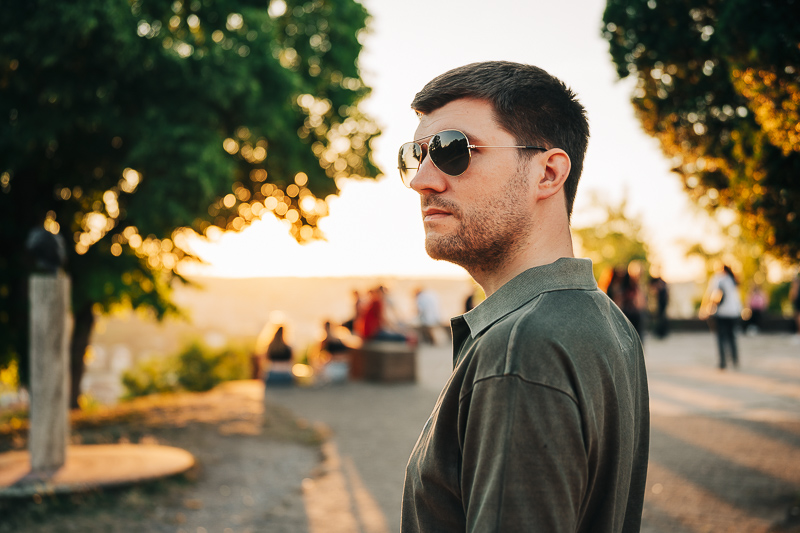
Further Reading
- M-mount lens reviews
- Lens aberrations explained
- Review: Laowa 35mm 0.95 FE
- Review: MS-Optics 50mm 1.0 ISM
Support Us
Did you find this article useful or just liked reading it? Treat us to a coffee!
![]()
![]()
![]() via Paypal
via Paypal
This site contains affiliate links. If you make a purchase using any of the links marked as affiliate links, I may receive a small commission at no additional cost to you. This helps support the creation of future content.
Latest posts by BastianK (see all)
- Analogue Adventures Part 42: A wedding with Eastman Double-X 200 - July 2, 2025
- Vivo X200 Ultra – The Death of the compact Camera - June 29, 2025
- Review: Laowa 12mm 2.8 AF - June 26, 2025
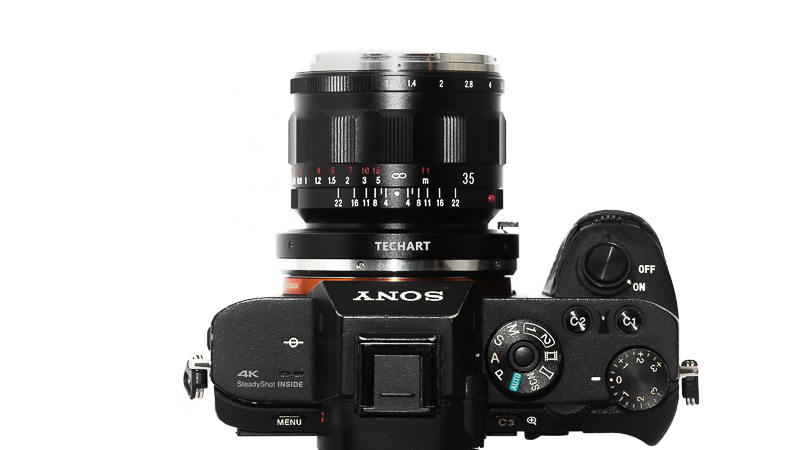
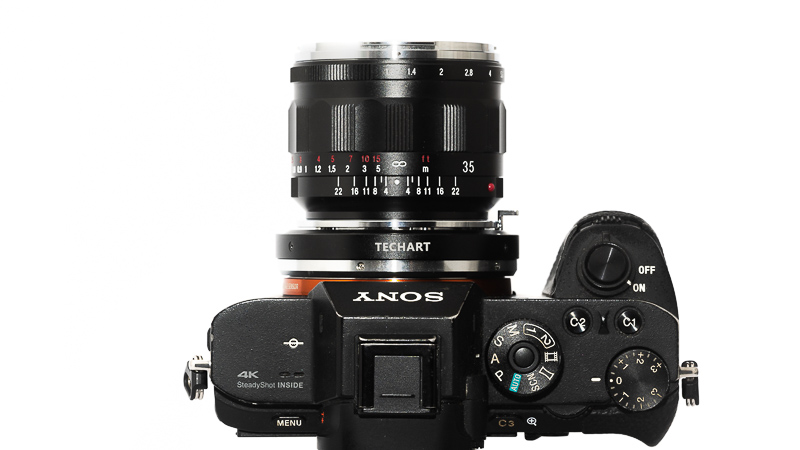
The lack of firmware updates for the predessor? There have been 7 firmware updates since the Techart LM-EA7 was launched!
And none for the last 4 years and none to support current cameras.
Hi, it’s been a while for me to leave a comment here, and I’m so pleased to read your articles again :D.
I’ve noticed your comments on FM LM-EA9 threads before the review, and one question emerged in my head: is the wobble issue of the predecessor solved completely on this version? No one could answer that for now, so I should wait and see about it.
Even if there are some restrictions, I still like the concept. Focusing Voigtlander 50 f/1.2 manually on my nephew annoyed by the sun wasn’t easy for me. If I get a better chance to capture some fun moments with this adapter, I’ll use it.
Thanks for the review.
The wobble issue should theoretically be addressed with implementing four motors instead of one, but only time will tell how true that is.
I think it took about a year or even longer until this issue was detected with the LM-EA7.
https://www.dpreview.com/forums/post/60154484
ProfHankD at DPreview pointed out 4.5mm depth of the lens carrier is not sufficient for supporting big, heavy lenses. So, it must be hard job to make it not wobble. Bastian already mentioned cheap helicoid macro adapters are not reliable like Hawk or Voigtlaender adapters even without AF function.
Unfortunately also true for non-cheap ones 🙂
Do you still use Voigtlaender close focus adpater? If there aren’t any sign of wobble, I guess LM-EA9 can do the same “technically”.
I replaced it with the much lighter hawk’s factory adapter but the VM-E was definitely the most durable.
I wonder if it would work with the Noctilux 50mm f f/0.95?
Close to the center of the frame: yes, definitely.
In the midframe and corners this lens has loads of aberrations, so I am not sure how well it will work, at least at wider apertures.
Im talking about speed … will it be faster than my current af adapter? I guess I will have to try it out and see. Thx!
Most likely yes.
When using lenses with floating elements what sort of image quality loss is there and to what degree? Is it big enough of a problem that you wouldn’t pair those lenses with this adapter?
In most cases you will only notice the difference close to the minimum focus distance and you can of course always set a similar distance on the lens manually, then it will be hardly noticeable with most lenses.
It also depends on the focal length, the shorter the focal length, the bigger the problems could be.
You will notice dramatic differences with the TTARTISAN 50mm f/0.95. But I didn’t observe significant differences with my vintage lenses.
Thank you for this early review of the new Techart adapter. I own the LEA7 adapter and plan to buy this LEA9 soon. I have to choose if I will spend my money for this adapter or a black Biotar 5,8cm F2 this month…
It would be nice if 2 issues that bugged me with the LEA7 adapter would have been discussed in more detail here: AF noise and the battery drain of the old adapter. I found the information in the review but I had to use the search function since I skipped it over when reading the review.
As a whole I like the idea of an universal Z-Axis-AF adapter. But Techart should invest more in software features and in some external controls. I don’t like the setting of the focal length over the aperture. You have to remember each focal length and could accidentially change it. It would be great and a more professional solution to add some buttons or wheels to adjust it.
It would be great if users could store a list of lenses on the adapter so that I can add unusual focal length like 23mm. And then it can store the lens name in the Exif data. Maybe Techart did not figured out the name settings yet but that would be one big improvement for people with a lot of vintage lenses.
I would like to set the aperture of the lens within camera. At the moment the camera over or underexposes if you change the aperture to another value than 2.0. But I figured out that the aperture value might be used for auto exposure calculation of Sony cameras. With > F2 there seems to be no real effect. But when using lenses with F1.4, F1.2 or F0.9 you will see that the auto exposure will change the calculation if you go to apertures < F2. What I mean is that the exposure set by the Sony cameras auto exposure of a (f.e.) Voigtländer Nokton 50mm F1.2 SE and VM will differ on the same camera when you use apertures like F1.4 or F1.2. The auto exposure will use a brighter image on the manual (VM) lens than on the lens with working aperture info (SE). So for bright lenses it would be helpful to set apertures <F2.
And last but not least it might be helpful to adjust the micro calibration of the adapter. Please let users calibrate every lens separately. My LEA7 front focuses with every lens.
The exposure between SE and VM versions differs because the E-mount version has electronic contacts (and most likely embedded correction profiles) which will influence the exposure calculation.
You will also notice a difference when slightly unmouting the E-mount lens.
There is no issue with using lenses faster than f/2.0 on the LM-EA9 and it is by no means needed to be able to set a value lower than f/2.0.
You don‘t need to set apertures lower than F2. That was not the point I tried to explain. The point is what you mentioned about missing contacts. The LEA adapter is kind of added electronic contacts for every manual lens. So setting F1.2 on lens and on LEA adapter could equalise the auto exposure of the VM and SE versions of my example (VLN 50mm 1.2).
There seems to be some confusion how the aperture settings work
The aperture setting IN THE CAMERA to f:2.0 is requiered to calibrate the camera’s exposure measurement. It is completely independent of the aperture setting at the lens. The latter one controls the amout of light that gets to the sensor and determines the depth of field. The aperture setting at the lens can’t be transferred to the Exif since manual lenses can’t communicate the f-stopp setting to the camera.
The only other purpose of the camera-internal f-stop-setting is to program the Techart adapter to a specific focal length (that is later recorded in the Exif and is used to calibrate the IBIS). For this purpose one needs to take ONE shot a the camera-internal f-stop-setting f:2.8 or larger. This is done according to a table that lists f-stops and corresponding focal lengths. After you have done this one shot (and deleted the resulting useless image), the adapter is programmed to this one specific focal length. For the following shooting one needs to remember to reset the camera-interal setting back to f:2.0! The adapter now maintains the programmed focal length setting until you reprogram it by taking again a shot with the camera-internal f-stop-setting f:2.8 or larger.
The f-stop-focal length table is different from the original one that was used for the LM-EA7!
I hope this helps…
Don’t own a a7riv but the last update seems to be 2 years ago (2020) for the LA-EA7 and includes support for the a7riv, more info here: http://www.techart-logic.com/g-nex3/firmware/firmware.txt
and here:
https://www.dpreview.com/forums/thread/4542247
Seems it’s not recommended for other bodies though, so beware!
Regarding the weight limit of lenses: if you do not hold the camera but instead hold the lens and let the camera move, there is no issue… The A7-series is just below 500 gr (unless you attached something heavy to it).
And this is not theoretical: I have have the old version. Used it many times with the 7artisans 50mm F1.1. But I recently bouth the TT Artisans 90mm F1.25, which is just over 1 kg. And it works, I’ve taken it out for several shoots and it works. On condition that you hold it by the lens, so that it is the camera that moves when focussing…
And yes, I’ll upgrade. It’s too bulky and noisy the old one…
“Assign a custom button to AF/MF Ctrl Toggle”
Many thanks for this very useful hint! It also provides a quick work around in case the adapter struggles to find the focus. Than you can just press the button and focus manually.
Quels sont les boitiers Sony A7x compatibles ?
Lesquels sont incompatibles ?
Tous sont compatibles.
Can anyone here tell me how to make cookie choices on this website? I want to reject non-essential cookies, but the only choices I see are “Accept [our tracking of you]” and a button that takes me to an explanation of what cookies are. Thanks for any advice—
I noticed worse focusing speed and recognition on the A7R3 than with the LM EA7 and often a lack of the green focus detection frame in case of focus detection.
Anyone else?
Yes, I must say I made similar observations on the A9. It indeed feels slower than the LM-EA7 and the noise is different but not much quieter. The only advantage I see right now is the less bulky design.
I hope they will soon launch a firmware update.
One important note:
The LM-AE9 is NOT compatible to some LTM or M-mount lenses that have the infinity lock button located at the lenses flange level. The LM-EA9’s M mount is a bit recessed and the infinity lock button collides with the rim of the adapter if you try to mount it!
The list of NOT compatible lenses with the LM-EA9 includes (not sure if it is complete):
Leitz: Hektor 6.3/28mm, Summaron f:5.6/28mm, Elmar 3.5/35mm, Summar 2.0/50mm (rigid version only), Hektor 2.5/50mm, Elmar 3.5/50mm (LTM versions only, M works!)
TTArtisan 5.6/28mm, Voigtländer Heliar 2.8/40mm
This is really a shame…
Thanks for sharing, I added a note in the review pointing to your comment!
Also Voigtländer Heliar 3.5/50mm
So far I like it, big improvement over previous version. I’m using it mostly with voigtlander 50 mm apo, and I’m getting so beautiful images.
I only wish they could have been improved the AF area, it is really small and limited.
Do you think it will get better with firmware updates?
I highly doubt it 😕
Five updates so far! (13 Sept 2022)
„I only see very few use cases for this, often it is easier to just use either something close or far away to have the adapter retracted or extended and then switch to MF for it not to move around anymore.“
This doesn’t work, as when switched to MF, the adapter goes back to infinity position.
This is since the update to FW 1.5.0. I would rather recommend to use 1.4.0.
Oh thanks I see.
I hope they get the A7R3 running with the next update. It can hardly be used currently.
With what lenses and camera settings?
A Voigtländer 35 1.7 and a Noctilux 1.0.
Not sure what settings you refer to but I tried the two AF modes normal/slow you mentioned, without a difference.
With all settings the same, the old adapter focuses flawlessly. The problem is known to sellers in China. No proper backwards compatibility prior to A7R4 yet.
I have been using it with A7III and A7rII and did not encounter such problems, at least with the 35mm 1.7.
Noctilux is so full of aberrations, wouldn’t be surprised if those confuse the AF.
Make sure the camera is set to AF-C and not AF-S or AF-A.
And Area Wide works better than spot small.
The Noctilux and the Voigt focus great with the same settings on the EA7 adapter, so it can’t be the lens. The EA9 in combination with the A7R3 is the problem.
And yes the Noct 1.0 has various imperfections, but it’s character in low light can simply be magic as no other. Nothing for someone searching for perfect lenses with their character however. I have some more perfect lenses (24GM, 85GM, 135GM) and they are great. The 85GM having the most character (and the most imperfect test specs). But you know that 😉
I am surprised, I had the feeling the software between those adapters is pretty much the same.
My Chinese seller said they have several complaints of incompatibility with A7R3 forwarded to Techart. Techart also said, the EA9 was specifically made to support A7RIV like cameras, which seem to have been less supported by the EA7. So far they just seem to have forgotten full backwards compatibility.
With the new firmware 1.6, focus recognition is again on EA7 level for the A7R3, AF speed still is a little slower, but now the R3 is again properly supported.
By the way, as we had it about the Noct 1.0. I now got my Sony 50 1.2 GM to use for normal light scenarios where the Noct has way too many flaws. But in low light, the Noct has the same chreaminess of Bokeh between 1.4 and 1.7, which the GM has with 1.2. The Noctilux really is a low light bokeh monster and a piece of art there..
I got mine today and I made a quick comparison with my EA7 and new EA9. I was surprised by the result.
How many photos I can shoot in 20 seconds? (refocus for every image, near distance, VL Nokton 50mm 1.5 II, computer screen lens lit by computer screen = hardcore)
EA7 + A7RIII = 16
EA9 v1.4 + A7RIII = 14
EA9 v1.6 + A7RIII = 10
EA7 + A7C = 12
EA9 v1.4 + A7C = 11
EA9 v1.6 + A7C = 11
I checked the taken photos and there was no clear winner. I had the impression that EA9 v1.6 has a slightly higher hit rate than v1.4 but it might be test errors. I will redo this test with different lighting scenarios in the next days. My impression is that the old EA7 is faster than the new EA9. Did not expect this…
Very interesting information.
I hope mine still ships with v1.4 🙂
You can downgrade your EA9 pretty easy. All firmware version are selectable and installable from the Techart update tool. My adapter came with a docking station in the box. The docking station can be connected with a mini USB cable to your computer and lets you up- or downgrade your EA9 adapter. You have to install this little update tool from Techart to make everything work: https://techartpro.com/?page_id=5023
I never tried downgrading with my review sample. Good to know it works!
As play a period of time, not certain how long, around 3~5 hours, it suddenly can’t auto focus but have very small sound like c..c.. , again it is not work at this moment, then same configure of camera swap to LM -EA7 , it is work & can auto focus, after that return to LM-EA9, it is same still “NOT WORK”, then over one night , try again, LM-EA9 is work & auto focus again. BUT, after play around 5 hrs , it is not work again.
Above scenarios , occurs twice , now occurred third , it looks very strange, I buy it not more than 3 days.
And , this approach I am difficult return product to seller shop , on my side is very confuse due to NOT useful to me if the problem still happen, at least I can’t bring it to travel !
P.S : I just update to latest firmware, but the problem still happened.
Anyone have my case ? pls help !
I have a same porblem..
I can’t press shutter button. only very small sound c..c..
https://www.35mmc.com/21/11/2022/techart-pro-lm-ea9-auto-focus-lens-adapter-review/
you can check this review
Hi, I encountered a problem that my LM-EA9 could not forcus infinity and AF speed slowed down as well. I tried to fix it and done successfully!! How to fix => 1) Unscrew all the screws at lens mount side and remove silver mount part, you can see 4 moters then (be careful not to lose the spring at lens release button). 2) Unscrew side 3 nos. screws on the black cover to remove black outer case/cover. 3) There will be total 8 small screws at outer side which holds the 4 nos. moters. In my case these 8 screws are all loosen thus moters slightly moves when the moters powered, as a result it does not forcus infinity. Tighten up all the screws to fix the moters rigidly then put all black and silver covers back. My LM-EA9 recovered and all the forcus speed back to mormal. If you feel your LM-EA9 forcus speed is slower then before, it is worth try it to fix the problem as it is so easy.
Very interesting.
You didn’t take pictures during that repair process, did you?
Yes, I took pictures. How can I upload??
Maybe you can upload to Google drive or flickr or sth similar, then I will download and add to the article
OK, here is the way I repaired.
https://1drv.ms/b/s!AsdBBkLbT8aThM9yzq-YsTLBDqd_Kw?e=Ha2KuL
Thank you for reviewing this adapter. Have been considering it for using on my full spectrum converted A7iii and A7Rii cameras. I have several Zuiko primes in the 24-100 range that I like to use for IR.
David also bought one to use with his OM lenses 🙂
With my A7c, LM-EA9 ver 1.6 does not well autofocus with 50 mm lenses (Leica, Zeiss sonnar, and Nikon…). Hunting in most cases. It works relatively well with 25mm, 28mm, and 35mm. Please advise if you know how to solve this problem with 50 mm.
Don’t have an A7c, maybe try to downgrade the firmware to 1.4
Thank you, I will try. Happy new year!
Thank you very much for this review! Now I’m really interested in making my ‘1956 85mm Jupiter-9 an autofocus lens. It seems that a simple adapter ring will convert the M39 mount to LM. Also the close focusing feature would be really welcome, as I hit the focus limiter very often with Jupiter-9.
Yes, will work with a simple M39->M adapter.
I’m glad to inform that Jupiter-9 works nicely on LM-EA9, and it even detects eyes of cats on the very edge of the frame! (on A7III camera in AF-C mode)
The Industar-69 lens doesnt work so well though, it only reluctantly allows AF-S in the dead center of the frame. But, given the Lomography nature of I-69 with tons of aberrations, small wonder it doesnt allow camera to focus as freely as with J-9.
I tested the adapter today with my Noctilux 1.0. Compared to my old LM – EA7, i see only the well-known design advantages.
The new adapter creates a commotion when taking pictures. In my opinion, restlessness is the strength of manual lenses.This is one of the reasons I don’t use the old adapter and won’t buy the new one.The new Sony GM lenses work so accurately and quietly in AF first time it feels like working with manual lenses.Thanks to Bastian for your always inspiring reviews.
I have to correct. not restlessness is the strong of manual lenses. Radiate calm and serenity would be better. Sorry goggle translator.
Thank you for this nice, detailed review. Here is a little question:
I assigned a button to manual focus switch, but when I switch to manual, the adapter retracts and I loose the benefit of close focusing and I actually loose focus completely due to complete retraction of the adapter. Is there any way to prevent this happening? Occasionally I want to tweak the focus with magnifier, and it seems to be impossible… Many thanks.
Downgrade to Firmware 1.4.0, then it will work.
hello, we are having trouble downloading the MAC firmware update for the Techart LM-EA9,, our mac computer ( which is up to date) and we are getting a security warning, is there any way round this ?
And the adaptor is not working at all. The LM-EA7 does work but the newer LM-EA9 is not working ( it did for a while).
Please read the article on how to reset the adapter and if you have further issues contact Techart directly.
I am also not using a Mac computer but maybe you should just ignore that warning.
Sorry Phillip,
why did you feel this review necessary at all? In the maker’s intention, this adapter was supposed to repair the damage done by the previous version not being able to support the 4th generation cameras anymore. If you test it with the previous generation cameras you can at best confirm it works with those. This is not what potential buyers of this accessory want to know I imagine. The only reason to buy the EA9 is because the EA7 does not work at all with new cameras. Sure the EA9 has more bells and whistles than the EA7, but they don’t pay for the 400 bucks difference if you already own the EA7. In case you are curious I can tell you that I returned the EA9 because of its poor performance. I’d rather use the EA7 with my old A7R3. Cheers
Maybe you shouldn’t judge others by your own standards.
I think there are a lot of people that had zero interest in the LMEA7 but are very interested in the LMEA9.
Could it work with an Opton Sonnar 1.5 RF with an Leica M Amedeo adapter?
Should work, yes.
Hi Bastian,
helpful review as always. I was wondering if you would personally consider getting an M mount version of a lens when there is an E mount version with the same optics, just because you can strap it on this adapter. I am having in mind mostly those dull non-contacts E mounts. Also if you don’t have a Leica mount body, just Sony.
There are several reasons why one might want to pick the M-mount version of a lens over the E-mount one.
Being able to use this AF adapter can of course be one of them.
Hello, Have you tried this with he Laowa 9mm F/5.6? Its the only lens im interested in using with this. Thank you so much!
What distances you want to use it at?
How can one find out if a Leica lens has floating elements?
They tell you in the data sheets.
Just google the name of the lens +pdf and check the drawing.
Here is the data sheet of the 21mm 1.4 that does feature floating elements as an example.
The ones with floating elements that come to mind: 21mm 1.4, 28mm 1.4, 35mm 1.4 FLE, 35mm 2.0 Apo, 50mm 1.4 Asph, 16-18-21, 28-35-50 (probably not a complete list, but might already help you).
Thanks! I found that my 35mm 1.4 asph has floating elements. It seems this may only matter for close focusing. Most of my photography is on the street. Would I be right in not worrying about floating elements?
Yeah, I would recommend to set the lens to infinity when using it with the adapter.
Thanks! I have another question. Once you set the focus and take a picture, does the focus remain in place or must one refocus again for the next shot? I am thinking of the convenience of being able to use the same focus for many shots of the same object without refocusing.
If your camera is set accordingly the focus will remain in place.
Thank you much for the review! Does anyone know if the lm-ea9 activates the AF illuminator on a 4th gen a7? My flash doesn’t have an AF illuminator and the a7iv’s built in AF illuminator doesn’t seem to turn on in low light even with AF illuminator set to and in AF-S when using the techart.
Thanks for the review. I bought the techart pro LM-EA9 about a year ago. It has mechanically failed after being barely used with the motor making only a click sound. It’s quite expensive at $399 for it to fail after a year. There is no response from their customer service. I wouldn’t trust anything Techart Pro sells on its website.
Did you try the steps explained here to reset it?
Hi
I’m having problems with AF hunting and often,the shutter not taking a shot, with the LM-EA9 I just purchased. My body is a 7s. Should I try using firmware 1.4? I tried 1.6 with no success.
I would have had second thoughts on the purchase had I read the recent posts on the unreliability of the adapter!
The A7s is not even on the compatibility list. No idea if a different firmware would help here.
Hi
Techart states it is, from the 7s to the newer models, as reproduced in Fred Miranda’s Sony Forum post at the bottom of page 1.
I have emailed Techart, but have not received any response yet.
I tried v1.4 with no improvement in the results.
That’s some kind of bug inside the Techart firmware. My adapter grunting like crazy after a few months of using. I contacted my reseller once and they also contacted Techart about this problem and they responded that upgrading to newest firmware will not fix this issue, just try focusing and the mount will work again. This is the steps I tried and worked:
1. Try focusing the lens to release the shutter
2. Cover the lens (by hand or by the lens cap) to black out the sensor then hold the focus button while covering the lens. If you are lucky then the adapter will work again. If not, release your cover and try again from step 1.
This rarely happens and it would only take 3 – 5 minutes to fix but it’s really annoying if it happens while I’m on a duty
I noticed that the focusing with stopped down lenses is often not accurate.
Anyone else experiencing this?
If you are talking about f/8.0 to f/16 that is normal, as there is not enough light for the AF to work anymore.
I have the Techart LM-EA9 and it has become very important to me, especially in combination with Eye AF. Now I read with concern that it has broken for many users and that repair or replacement is practically impossible (China).
I wonder why these adapters have broken – could it be that the lenses used in these cases were too heavy, i.e. over 500 grams?
I force myself not to exceed these 500 grams, which is often painful, because many lenses that are not LeicaM often weigh more, especially with the necessary intermediate adapter.
My question and request for answer to those users:
could it be that the adapter could have broken because of lenses that are (a bit) too heavy?
Thank you and best regards.
Ich hab meinen LM-EA9 heute bekommen, kann ihn aber leider gar nicht benutzen, weil er nicht mehr aus dem USB-Adapter heraus will!. In das Bajonett hinein ging es etwas hakelig, jetzt sitzt er dort fest, lässt sich locker eine Vierteldrehung hin- umd her drehen. – aber nicht mehr abnehmen …nervig ..
My LM-EA-9 seems to be blocked in the bayonet of the USB-adapter. I got it in . but it won’t come off again!
Any ideas?
Had the same problem at first. Keep trying and you will manage to get it off. And only use that rear cap for firmware updates.
Ich hatte anfangs das gleiche Problem. Es war jedoch ein Bedienungsfehler von mir, da ich den kleinen, silbernen Entriegelungsknopf am USB-Adapter zum Entriegeln fälschlicherweise zur Mitte hin drückte,- er muß aber ganz! nach unten! gedrückt werden, Richtung Kamera.
Ich verwende als Rückdeckel nur normale Deckel, nie den USB-Adapter. Firmware-Updates mache ich beim Techart vorsichtshalber nicht, weil der Adapter bis jetzt gut funktioniert.
Have you tried reducing the minimum focus distance?
I made the experience that setting the lens to its minimum focus distance (instead of infinity )and then letting the EA9 take it from there basically makes it work as an extension tube. Just with AF.
My LM-EA-9 arrived yesterday. On my A7III, it only allowed exactly four shots, then stopped working. Turning the camera off and on again helped for the next four shots. This was absolutely reproducible.
A firmware update from version 1.7 to 1.8 helped. Now it seems to be working very well. I hope it stays that way.
The adapter was shipped with version 1.7.